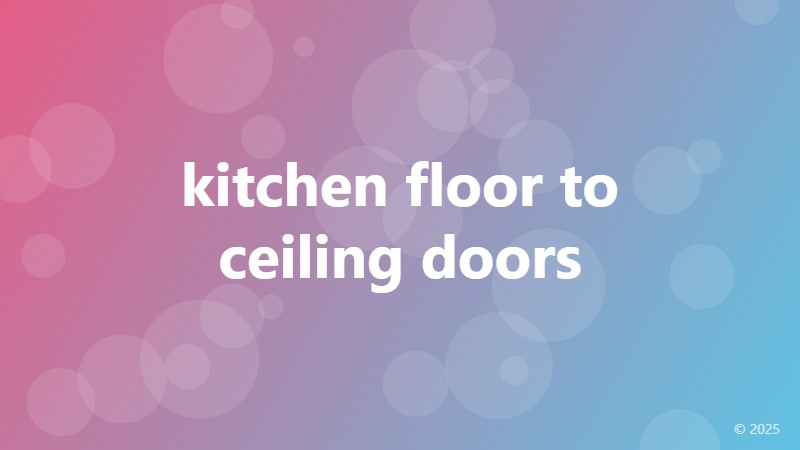kitchen floor to ceiling doors

Revolutionize Your Kitchen with Floor to Ceiling Doors
When it comes to kitchen design, one of the most overlooked yet crucial elements is the door system. Traditional kitchen doors can be clunky, noisy, and obstructive, taking away from the overall aesthetic and functionality of the space. That's where floor to ceiling doors come in – a game-changing solution that can elevate your kitchen to new heights.
The Benefits of Floor to Ceiling Doors in Kitchens
So, what makes floor to ceiling doors so special? For starters, they offer unparalleled flexibility and customization. With floor to ceiling doors, you can create a seamless transition between your kitchen and adjacent rooms, or even connect your kitchen to the outdoors. This not only enhances the visual appeal of your kitchen but also allows for better airflow and natural light penetration.
Another significant advantage of floor to ceiling doors is their ability to create a sense of openness and spaciousness. By eliminating traditional door frames and hardware, these doors create a sleek, unobstructed view that makes even the smallest kitchens feel more expansive. This is particularly beneficial in galley kitchens or those with limited square footage.
Design Options for Floor to Ceiling Doors
One of the most exciting aspects of floor to ceiling doors is the vast array of design options available. From sleek, modern glass doors to rustic, wooden sliding panels, there's a style to suit every kitchen aesthetic. You can choose from a range of materials, including aluminum, steel, or timber, each offering its unique benefits and characteristics.
For a more minimalist approach, consider opting for frameless glass doors that provide an unobstructed view and a sense of airiness. Alternatively, you can choose doors with integrated storage or shelving units to maximize kitchen functionality. The possibilities are endless, and the right design can elevate your kitchen to a whole new level.
Practical Considerations for Floor to Ceiling Doors
While floor to ceiling doors offer numerous benefits, there are some practical considerations to keep in mind. Firstly, it's essential to ensure that your kitchen ceiling is structurally sound and capable of supporting the weight of the doors. You may need to consult with a professional to assess your ceiling's integrity and make any necessary adjustments.
Additionally, you'll need to consider the functionality of your doors. Will you opt for manual or automated opening systems? How will you address issues like noise reduction, insulation, and weatherstripping? By carefully planning and addressing these concerns, you can ensure a seamless and enjoyable kitchen experience.
By incorporating floor to ceiling doors into your kitchen design, you can create a space that's not only visually stunning but also functional, flexible, and tailored to your unique needs. So why settle for traditional kitchen doors when you can revolutionize your space with the ultimate game-changer?